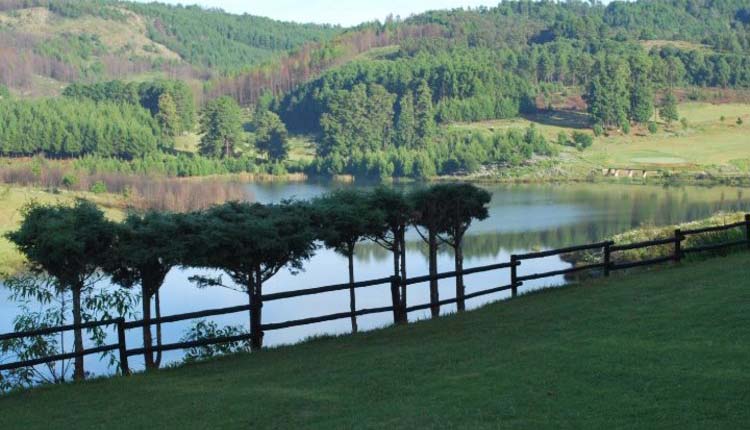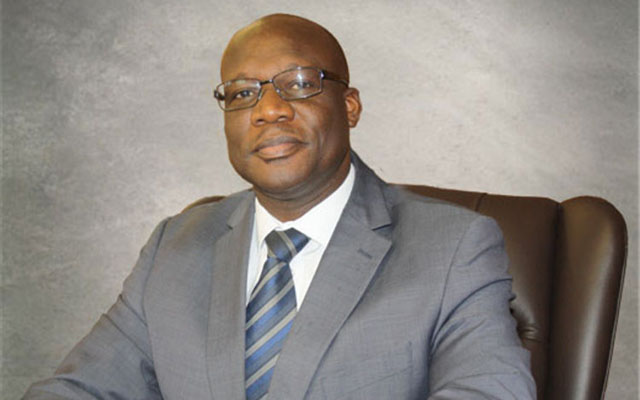Celebrating Nyanga, the ‘Scotland’ of Zimbabwe


Nyanga is a place of great natural beauty,whose scenery is indeed similar to the misty, romantic Scottish Highlands; gentle woodlands and natural crystal clear streams full of trout
Sekai Nzenza On Wednesday
I said no, I had not travelled in Zimbabwe much. In fact, I had only been to Salisbury (Harare) once and nowhere else. But I could draw the map of Rhodesia and knew where Mount Inyangani or Nyanga was.Edzai Hondo came from the Eastern Highlands. We did not know his real name because during the liberation war, the freedom fighters were called comrades or vanamukoma. Edzai must have been six foot or more tall, slim built and very light skinned with freckles on his nose and deep set eyes that were often bloodshot.
I first saw him in December 1976, when he arrived one night at Chisangano Primary School.
My sister Munyengetero taught Grade Two at the school during that year. Edzai was accompanied by a younger guy called Kenny. They carried guns on their backs. It was raining. They stayed the night in one of the teachers’ houses. Their guns were hidden under Munyengetero’s bed together with pamphlets about the war. Edzai Hondo gathered everyone in headmaster Kurebgwaseka’s house and secretly briefed the teachers about the war. I read the pamphlets to my sister Vongai when nobody was looking.
The following morning, Edzai climbed a big rock near the teachers’ houses. I recall him standing tall, wearing a big hat with words written, “kufa kana kurarama, tinofira Zimbabwe.” To live or to die, we die for Zimbabwe.
He turned and saw me standing there, holding a flat metal tray full of ashes, madota, in my hands because I had been asked to make a fire so Edzai and Kenny could have tea.
After tea, Kenny would then ride a bicycle to Maware Township, just like another village boy going to buy cigarettes. And yet, Kenny was gathering information under cover, about the movements of the Rhodesian soldiers.
Edzai looked towards the Hwedza and Mbire mountains. Then he turned to me again and smiled. He said, “Kune makomo akanaka ku Eastern Highlands. Varungu vanoti ndiyo Scotland yavo. Asi tichaitora chete. (There are beautiful mountains in the Eastern Highlands. The Europeans call this place their Scotland. One day, we shall take their Scotland because it is not Scotland.)”
Edzai said one day, when the war was over, I must travel to the Eastern Highlands and see how beautiful our country was.
The same day, at night, Edzai and Kenny disappeared as they often did. A week or more later, we saw helicopters circling Homa mountains and we heard gunshots. Later on, the news spread through the villages that a big fight had occurred near Homa. A number of soldiers died and some comrades as well. They said among the dead were Edzai and Kenny.
When the war was over, we were told by the people living near Homa mountains that Edzai and Kenny’s bones were buried together with the other heroes at Chinyamungororo.
Maybe Edzai died during the ambush at Homa. I do not know.
Last weekend, I understood why Edzai said Nyanga in the Eastern Highlands had the physical attributes of Scotland. Although I have travelled to Nyanga before, I had not taken time to actually stay the night at Troutbeck Inn and also visit Rhodes Nyanga Hotel and the Rhodes Museum which are all in the same area.
Among the early colonialists who marvelled at the beauty of Nyanga and the Eastern Highlands was none other than Cecil John Rhodes, who named this country Rhodesia, after his name. Cecil John Rhodes built a home in Nyanga, a few kilometres from Troutbeck Inn.
I arrived at Troutbeck Inn with my Australian companions last Saturday. I wanted them to see the beauty of Zimbabwe. It was raining but a big log fire warmly greeted us. This fire in the reception area has been burning ever since 1953.
We ordered tea and scones. The mist outside covered the lake, the trees and the mountains. The Australians loved it. Mother and son (both of Scottish background) looked at the mist and said, this is like Scotland. I had a sudden flashback of the past. I nodded quietly. In my mind, I remembered Edzai. I said to him, honaka, nyika yawakafira, ndaiona nhasi (See the land you died for, I have seen it today).
Nyanga is a place of great natural beauty, gentle woodlands, and natural crystal clear streams full of trout. The scenery is indeed similar to the misty, romantic Scottish Highlands. If it was not raining, we might have dared to climb Zimbabwe’s highest peak, Nyanga, which the Europeans called Mount Inyangani. This is a scared mountain. People have been known to disappear here forever.
After Troutbeck Inn, we went to the Rhodes Nyanga Hotel where there is a museum with various Rhodes artefacts and other historical manuscripts and photographs.
The building was built in 1897 by R. Marks, a stonemason who worked for Cecil John Rhodes. Rhodes used to visit the Eastern Highlands and he built his stables here during 1897 and 1900. He loved the beauty of Nyanga and hoped to establish agriculture and livestock projects.
My Australian partners walked around deeply touched by a sense of colonial nostalgia. They were pleased to read a plaque in the museum that said the former Australian Ambassador, H.E. Matthew Neuhaus contributed money to the Don Grainger Reading and Research Room. At present, we noticed that the reading room has a pile of river sand which is needed to rebuild the floors after rain threatened to drown the library. The books were rescued quickly and placed upstairs in a big heap. They should not stay like that for too long, or moisture or termites will soon destroy them. Someone from the Australian embassy should be told, in case there is a pocket of money somewhere.
I stood next to Chief Tangwena’s historical display in the Rhodes Estate Museum. Although the history is a brief summary, it tells you that the land was not vacant when Rhodes arrived here to settle and conquer. No. This was the land where Chief Rekayi Tangwena and his people lived.
After Rhodes’ home was established and Troutbeck Inn had been built, the Rhodesian government decided to force Tangwena’s people to move elsewhere in order to make room for more European settlement. The then Minister of Lands, Phillip Van Heeden, visited Tangwena and offered to settle him in Gokwe, a long way from Nyanga. Tangwena refused.
The Times magazine on Friday, September 6, 1969, had a headline titled: “Rhodesia: Slum Clearance, Salisbury Style”. The report noted the following: “Working under cover of darkness, Rhodesian officials last week swooped down on the thatched kraal of Chief Rekayi Tangwena.
“After a brief, bitter struggle, Rekayi and a sub-chief were bundled into a police Land Rover and driven to a tribal reserve 17 miles away. Protesting their chief’s removal, 160 angry tribesmen hiked 30 miles to the nearest district commissioner’s office. They were led by Rekayi’s defiantly bare-breasted wife, Matadziseyi, and a number of women who stripped completely —a common form of demonstrating contempt for authority in some parts of Africa. Most of the protesters, including the women, were seized and jailed.”
On October 29, 1970, Ian Douglas Smith’s Rhodesian government proceeded to impound Chief Tangwena’s over 500 cattle and burn their homes. Tangwena appealed to the District Commissioner, arguing that Nyanga was his ancestral home. But Tangwena was told by the District Commissioner that he was now a squatter on the ranch of a white farmer called William Hanmer.
Chief Rekayi Tangwena was taken to the Magistrates’ Court at Nyanga in May and June 1967 and his crime was recorded as follows: “On or about the period extending from November 1966 to April 1967 and at or near Inyanga (Nyanga) in the Province of Manicaland, the said Rekayi, being an African, did wrongfully and unlawfully occupy land in a European area.”
The story of Tangwena’s heroic fights against colonial settlement in Nyanga is well documented. In 1975, Chief Tangwena and many others crossed into Mozambique to join the liberation struggle. At independence in 1980, Tangwena and the people celebrated freedom and access to the land. Chief Rekayi Tangwena became a Senator. He died on June 11, 1984, a celebrated hero who is buried today among the liberation war heroes of this country.
Meanwhile, Edzai Hondo lies at Chinyamungororo Heroes Acre. His spirit wonders in the mist across the valleys of Eastern Highlands. I want to believe that he smiles to see us enjoying the beauty and the mountains of Nyanga today.
For the Europeans visiting the Eastern Highlands, Nyanga is Scotland in Zimbabwe. But for us and many who have never been to Scotland, this is Zimbabwe, our beautiful ancestral home.
Dr Sekai Nzenza is a writer and cultural critic.










Comments